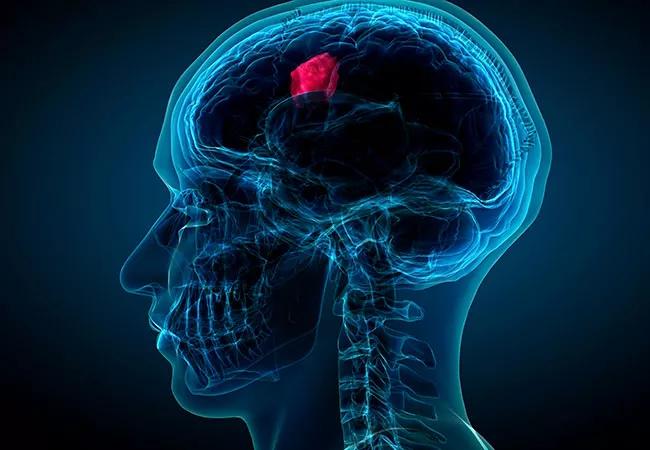Study considers the latest WHO molecular classifications

Patients with grade 2 low-grade glioma (LGG) have a more positive prognosis than those with higher grade disease; unfortunately historical data demonstrates that 72% of these patients will undergo malignant transformation (MT). So identifying patients who have the highest risk of MT and developing strategies to mitigate its development are essential.
Advertisement
Cleveland Clinic is a non-profit academic medical center. Advertising on our site helps support our mission. We do not endorse non-Cleveland Clinic products or services. Policy
In 2016, the WHO established new molecular classifications for LGG. In a recent study, Cleveland Clinic Cancer Center researchers used these classifications to investigate MT in a cohort of LGG patients.
The study, published in the International Journal of Radiation Oncology, follows up on an earlier study of MT and LGG that did not include molecular classifications. In addition to understanding risk factors for MT, the initial study also identified an MT rate of 21% which is more representative of a modern treatment era. The updated findings were presented at the 2019 ASTRO annual meeting. “Molecular classifications are so important in understanding outcomes. We wanted to find out if the risk factors we identified in our prior study were still important and had an impact on malignant transformation,” says Erin Murphy, MD, a radiation oncologist at Cleveland Clinic Cancer Center and study author.
The study cohort included LGG patients from an IRB-approved database of patients 18 and older treated at Cleveland Clinic from 1980 to 2018. The 486 molecularly classified patients had a median age of 39 years, median tumor size of 3.9 cm and median follow up of 5.3 years, and 54% were male. MT was defined as pathologic confirmation of grade 3 to 4 glioma or new/increased contrast enhancement with a growth pattern consistent with MT as determined by a multidisciplinary consensus.
The tumors, which did not undergo molecular testing sufficient for molecular classification at initial diagnosis, had pathology review for IDHIR132H mutation using immunohistochemistry. Three molecular classifications, IDHmut1p/19qcodel, IDHmut1p/19qintact and IDHwt, were found in 169 (35%), 125 (26%) and 192 (40%) patients, respectively.
Advertisement
Regarding initial extent of resection, 160 (33%) participants had biopsy alone, 104 (21%) had subtotal resection, 204 (42%) had gross total resection (GTR) and 18 (4%) were unknown. Adjuvant management was observation in 246 (51%), temozolomide (TMZ) alone in 82 (16%), radiation therapy (RT) alone in 63 (13%), RT concurrent with TMZ in 81 (17%) and unknown in 14 (3%) patients.
TMZ alone was more likely to be used in the IDHmut1p/19qcodel group and observation in a classically defined low-risk group. After TMZ alone, 64 patients progressed (78%), and 47 (57%) received salvage RT. Of the patients observed, 74 (30%) progressed and salvage was RT in 10, TMZ in 36 and RT and TMZ in 28 patients.
The median overall survival (OS) for the entire group was 15.7 years. MT (67% by pathologic confirmation) occurred in 84 patients (29 with IDHmut1p/19qcodel, 22 IDHmut1p/19qintact and 33 IDHwt), with an estimated five-year freedom from MT (FFMT) of 86%. The median OS after MT was 2.4 years.
The study identified these risk factors for MT:
The risk factors other than the molecular classifications were the same as those identified in the previous study.
This study is the first in the literature to report that molecular classification is associated with the risk of MT. Population-based studies have demonstrated that the male sex is associated with worse OS for glioblastoma, and recent data suggests that the female sex may be predictive of a more favorable treatment response, which may be due to multiple factors. This study indicates that male sex, after correction for molecular classification and other contributory variables, is independently associated with both MT and worse OS among grade 2 gliomas.
Advertisement
Adjuvant TMZ alone was the only modifiable risk factor associated with MT despite more IDHmut1p/19qcodel patients treated with this strategy. “Adjuvant chemotherapy alone is typically not an approach we use to treat low-grade glioma patients, especially with the two higher risk classifications. With a greater understanding of the risk factors for malignant transformation, we can start thinking of ways to alter our therapies and ideally deepen our understanding of the biology of malignant transformation to help guide treatment,” says Dr. Murphy.
Further research is planned using the database to work with the Center for Immunotherapy and Precision Immuno-Oncology to develop an immunotherapy approach for patients who develop MT and perhaps alter therapy to prevent it from happening. “For low-grade glioma patients who don’t do as well, we should enhance therapies and also consider their quality of life. Our large molecularly classified database is a tremendous resource for investigating this patient population,” says Dr. Murphy.
Advertisement
Advertisement

Bispecific antibody bridging therapy deepens durability of BCMA CAR T-cell therapy without overlapping toxicities in patients with relapsed/refractory multiple myeloma

Phase 2 study brings pivotal advances in treatment efficacy and safety for the most challenging-to-treat population

Patient with quadruple refractory multiple myeloma achieves complete response with cell therapy

Distinct baseline immune profiles can predict response and resistance to different types of CAR-T cells.

National Blood Clot Alliance collaborates with faith-based organizations on first-of-its-kind church bus tour

AI-driven tools can streamline enrollment and improve efficiency across clinical trials.

Patient achieves complete remission from aggressive marginal zone lymphoma with liso-cel

Supporting patients during pregnancy and beyond